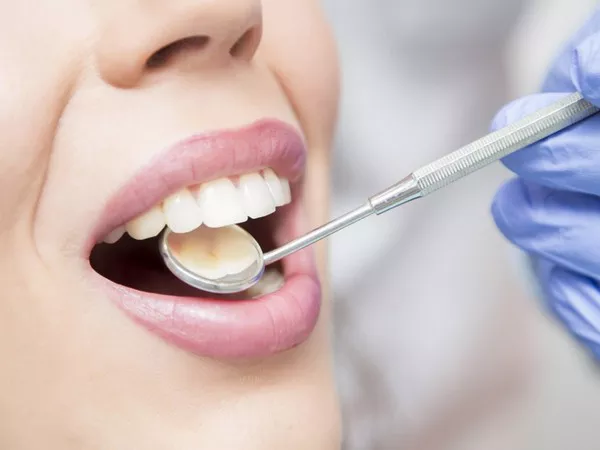In a world where a radiant smile is often associated with confidence and vitality, the color of our teeth plays a crucial role in making a lasting impression. Yellow or stained teeth can be a significant source of self-consciousness, but fear not, for you can restore your smile’s luster and brilliance. In this comprehensive guide, we’ll explore the answers to the pressing question, “Can you whiten stained yellow teeth?” We’ll delve into various methods and techniques, providing you with a range of options to achieve a brighter, more confident smile.
1. Understanding the Causes of Yellow Teeth
Before we embark on our journey to whiter teeth, it’s essential to understand the root causes of yellowing. Yellow teeth can result from a variety of factors, including:
a. Dietary Habits: Consuming excessive amounts of tea, coffee, red wine, and certain foods can stain teeth over time.
b. Tobacco Use: Smoking and chewing tobacco products are notorious for causing yellowing and staining of teeth.
c. Poor Oral Hygiene: Neglecting regular brushing, flossing, and dental check-ups can lead to yellow teeth due to the buildup of plaque and tartar.
d. Aging: As we age, the enamel on our teeth naturally wears down, revealing the yellowish dentin beneath.
e. Genetics: Some individuals may have naturally darker or more yellowish teeth due to their genetic makeup.
2. Exploring Teeth Whitening Options
Now that we’ve grasped the root causes of yellow teeth, let’s delve into the various teeth whitening options available:
a. Professional Teeth Whitening: For the most effective and immediate results, consider consulting a dentist for professional teeth whitening. This method often involves the use of hydrogen peroxide or carbamide peroxide gels applied under controlled conditions to break down stains.
b. At-Home Teeth Whitening Kits: Over-the-counter teeth whitening kits, including strips, gels, and trays, can provide a more affordable and convenient option. Many of these products contain a lower concentration of whitening agents compared to professional treatments, so results may take longer to achieve.
c. Natural Remedies: Some individuals opt for natural remedies such as baking soda, activated charcoal, or hydrogen peroxide mixed with baking soda to whiten their teeth. However, these methods may take longer to yield results and should be used with caution.
3. Professional Teeth Whitening: A Closer Look
Let’s dive deeper into the first option—professional teeth whitening. This method offers the most potent and immediate results, making it a preferred choice for those seeking a fast transformation.
a. In-Office Whitening: Dentists perform in-office whitening procedures, using advanced equipment and highly concentrated whitening agents. These procedures typically take an hour or less, and you can expect several shades of improvement in a single session.
b. Customized Treatment: Your dentist will tailor the treatment to your specific needs, ensuring the safety of your teeth and gums throughout the process.
c. Long-Lasting Results: Professional teeth whitening can provide long-lasting results, and your dentist will offer guidance on how to maintain your new, brighter smile.
4. At-Home Teeth Whitening Kits: Convenience and Affordability
For those seeking a more budget-friendly and flexible option, at-home teeth whitening kits are a popular choice. These kits are available over the counter, but it’s essential to use them as directed for safe and effective results.
a. Custom-Fit Trays: Some kits provide custom-fit trays for a comfortable and secure application of the whitening gel.
b. Whitening Strips: Whitening strips are pre-coated with a whitening agent and can be applied directly to the teeth. They’re easy to use and generally yield noticeable results after a few weeks of consistent use.
c. Gel Application: Some kits include whitening gel that you apply to your teeth using a brush or pen applicator. This method offers flexibility and precise control over where you apply the whitening agent.
5. Natural Remedies for Teeth Whitening
If you prefer a more natural approach, there are home remedies you can explore:
a. Baking Soda: Baking soda is known for its mild abrasive properties, which can help remove surface stains. Create a paste by mixing it with water and apply it to your teeth for a few minutes before brushing.
b. Activated Charcoal: Activated charcoal can absorb impurities and stains. Brush your teeth with activated charcoal powder or use charcoal-infused toothpaste to gradually whiten your teeth.
c. Hydrogen Peroxide and Baking Soda: Create a whitening paste by mixing hydrogen peroxide and baking soda. Apply it to your teeth and leave it on for a few minutes before rinsing thoroughly.
In conclusion, the answer to the question, “Can you whiten stained yellow teeth?” is a resounding yes. With various options available, you can achieve a brighter, more confident smile. Whether you opt for professional teeth whitening, at-home kits, or natural remedies, the key is consistency and patience. Consult your dentist to determine the best approach for your unique needs and enjoy the positive transformation of your smile.
Related Links:
Do whitening strips work after one use?
What not to Do after using whitening strips?
How much to bleach teeth at dentist?




























